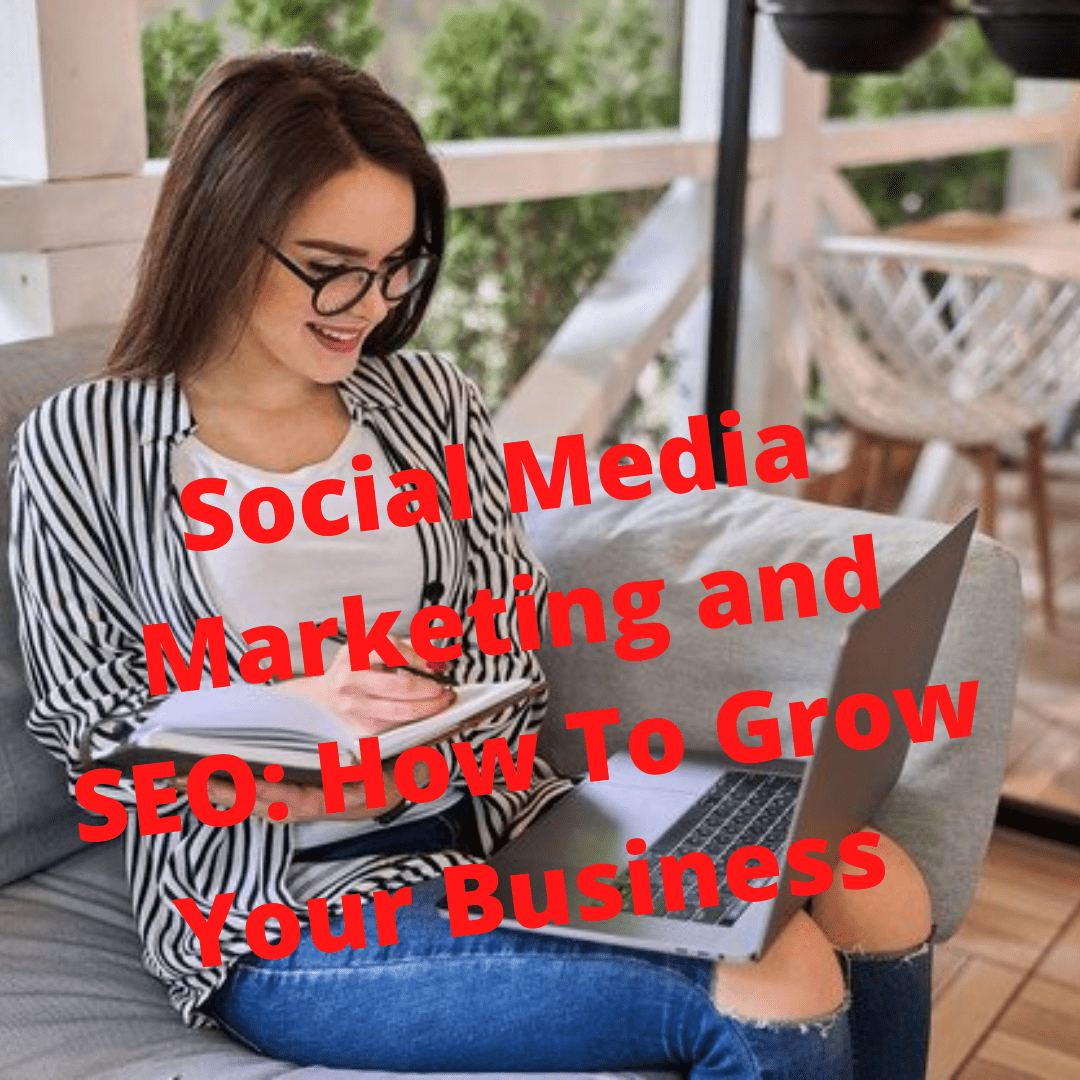
Social media marketing and search engine optimization (SEO) are 2 strategies to grow your business successfully.
Social Media Marketing and SEO: How To Grow Your Business Successfully
Social media will help you to engage with your target audience, increase brand awareness, and build a loyal follower base.
But, without a website, your online presence is incomplete.
A website will help you to attract your prospects and also you need an SEO strategy to optimize your website for search engines.
1. What Is SEO (Search Engine Optimization)
SEO is the process of optimizing your website to be more search engine friendly. And also to rank higher in the SERP (Search Engine Results Page).

How do search engines rank websites?
Search engine bots crawl your website’s content and judge its positioning based on various ranking factors.
SEO is divided into two categories: on-page and off-page SEO.
a.) On-Page SEO
On-page SEO is about the SEO activities that take place on your website.
This includes creating quality content that provides value to your audience, integrating keywords naturally in your content, headings, meta-tags, and meta descriptions.
Another crucial element of on-page SEO or technical SEO is ensuring that your website is fast and optimized for mobile devices.

That’s because Google prioritizes page speed and mobile-friendliness as ranking factors.
Smartphones now generate 54.8% of all web traffic and 53% of mobile users will abandon a web page if it doesn’t load within the first 3 seconds, a poorly optimized website will not rank high.
Experts from a NY web design company suggest going for a responsive or mobile-first design to avoid this from happening. It’s easy to implement and offers a consistent user experience across devices.
Another important component of on-page SEO is interlinking. This is a process that ensures your web pages link to one another, guiding traffic and search engine crawlers through the website.

This way, search engine bots will have an easier time crawling and indexing your website. You need to provide links to pages relevant to visitors.
b.) Off-Page SEO
Off-page SEO involves all SEO activities that do not take place directly on your website, like link building,(backlinks) for example.
Link building is the process of getting other websites to link back to you. The more backlinks you have, the more credible your website will appear in Google’s eyes.

However, keep in mind that the quality of websites that link back to you also matters.
In terms of local businesses, other off-page SEO tactics include optimizing your Google My Business listing and gathering as many reviews as possible.
2. Social Media Marketing
Social media marketing is the process of using social media platforms to promote a business’s services or products, increase brand awareness and drive more traffic to a website.
Social media allows for a two-way conversation between businesses and their followers.

You interact with your target audience through posts, while your followers respond by leaving comments, likes, shares, etc.
To encourage engagement and grow brand awareness via social media, start by using social platforms your audience is active on.
Also, you need to focus more on visual content like videos, images, and infographics.

Videos and images are an excellent opportunity to show off your products, as they’re attention-grabbing.
Polls have also been effective in driving engagement.
3. How Social Media Affects SEO
a. Traffic
Social media is a powerful tool to generate traffic. You can increase traffic organically and via paid campaigns.

b. Natural Backlinks
Social media helps you place your content in front of broader audiences.
Followers tend to engage with high-quality content which helps you tap into their networks via home feeds.
More eyes on your quality content are more opportunities for gaining natural backlinks for your web pages.

Social media does not have a direct impact on SEO but it does help the SEO process by driving more traffic and increasing backlinking opportunities for your website.
4. Social Media SEO Tips
a. Content Easy to Share
The quality of your content matters but it’s important to make your content easy to share.
The simplest way to do this is by implementing social sharing buttons on your website. This will encourage your visitors to share your content.

Also, make sure that your blog posts contain attention-grabbing images, graphics, or videos that complement your content.
b. Cross-Promotion
Not all your website visitors are followers of your social media accounts and not all your followers know about or visit your website.
To optimize your content’s reach, promote it across your channels. From your website to your social media.
Start by placing the link to your website in your social media bios.
Also, encourage your website visitors to follow your social media pages.

c. Social Media Partnerships – Influencer Marketing
Social media partnerships, from user-generated content to influencers, can help you grow reach and traffic.
Investing in brand advocacy among your loyal customers and followers can also help you promote your brand at no extra cost.
Influencers are powerful. They tend to have a loyal fan base and are generally viewed as experts within their niche.
This could not only mean more traffic, backlinks, and better SEO but also more sales.

To make the most of influencer marketing, make sure to pick influencers who attract the right audience, show high levels of audience engagement, and align with your core brand values.
Last Tip
SEO and Social Media Marketing are two different strategies, but that doesn’t mean that they can’t work together.
An effective social media strategy can improve your website metrics and improve your SEO along the way.
Pro Tip

How To Improve Your Social Media Marketing